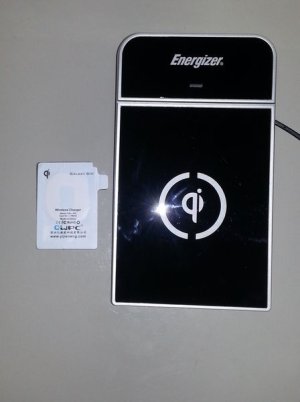SamSung's Wireless Group have their Standard Set, It's Not Qi !!!!
Alliance for Wireless Power approves its specification, edges closer to truly cable-free charging
posted Oct 30th 2012 1:13AM
Design by committee might not be the death knell for technology after all. Over four months after the Alliance for Wireless Power was founded in earnest, the coalition has already greenlit a specification for its partners to work from. The guideline lets device makers start building devices that charge through a magnetic resonance technology more forgiving of distance and material than Qi while simplifying the process through short-range wireless formats like Bluetooth 4.0. While the A4WP group hasn't made all the details public, it's holding meetings this week to speed up the commercialization process -- it's here that we'll learn whether the corporate bureaucracy is just as quick at getting wireless charging hardware into our hands as it is handshaking on standards.
Alliance for Wireless Power Rolls Out Flexible Wireless Power Specification
- Will support simultaneous charging of multiple devices with different power requirements
FREMONT, Calif., Oct. 29, 2012 /PRNewswire/ -- Alliance for Wireless Power (A4WP), a global and independently operated consortium focused on bringing wireless power to the consumer electronics marketplace, today announced that the technical working committee has approved a more flexible wireless power specification that will allow consumers to charge their mobile devices on a variety of compatible surfaces.
"The Alliance for Wireless Power and its members have been focused on creating a more flexible wireless power specification that sets the stage for formal standardization in the future," said Dr. Kamil A. Grajski, president of the A4WP. "Approval of the A4WP wireless power specification establishes a true path forward for the commercialization of wireless charging that will satisfy the needs of most consumers. A4WP and its members will now set their sights on building compliant wireless applications that can be integrated by key industries including automotive, furniture and retail."
The A4WP specification is based on a concept of spatial freedom, which extends wireless power applications beyond the accessory or add-on market to fully integrated solutions in the device as well as surfaces such as furniture and automobiles. The A4WP specification brings a number of unique benefits to the wireless charging ecosystem.
* For consumers, the A4WP specification supports simultaneous charging of multiple devices with various power requirements such as handsets, Bluetooth headsets, MP3 players, GPS devices and mobile tablets
* For industrial designers, the A4WP specification leverages a loosely coupled magnetic resonance technology and provides more flexibility for charging applications to be installed into automobiles, furniture and other surfaces
* For the consumer electronics industry, the A4WP specification takes advantage of broadly adopted wireless technologies, such as Bluetooth 4.0, which will allow manufacturers to minimize hardware requirements
"We know from our own global research that wireless power is an attractive feature for consumers. But to see it proliferate into our mobile devices, into our cars or at our favorite coffee shop, the industry must see that it can be practically integrated into many different devices and charging surfaces," said Steve Pazol, vice president of business development at Qualcomm. "The A4WP specification gives integrators and manufacturers that clear path forward to integrate wireless charging into almost any type of mobile device or surface."
"Today's consumer is often running around with multiple mobile devices, and it's clear that wireless charging technology will become critical to powering these devices as they advance further," said KiHo Kim, Executive Vice President of Samsung Electronics. "We endorse the A4WP specification because it is designed from the ground up to support this multi-device lifestyle and gives consumers the best available wireless charging experience."
A4WP members will meet October 30 and 31 in Dallas to discuss strategies to bring wireless charging technology to mobile consumers and the mass consumer electronics marketplace. The two-day program will include briefings on technical specifications, certification procedures and global regulatory considerations.


